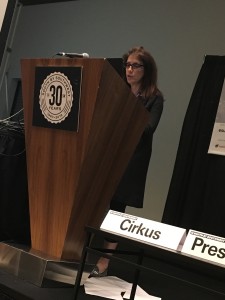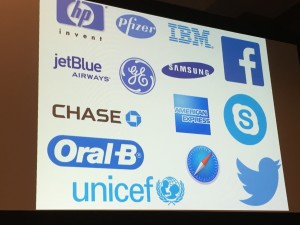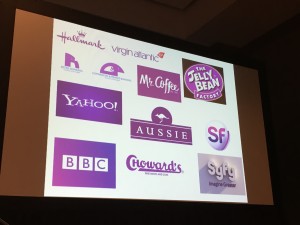Iconic brands have harnessed the power of color and produced strong emotional and psychological impacts on their business. We all know the Coke Red and Tiffany Blue. Some of the times we don’t even need to see the logo of the brand to know which company it is.
Some brands don't even require us to see their name; we recognize them by the color. (Tiffany blue, anyone?) #ColorStory #SXTXState #SXSW
— Aisling Clare (@aislingclare27) March 14, 2016
 “Color-related decisions are not so simple” Laurie Pressman, VP Pantone Color Institute, said. “There are so many things to consider when choosing color. I spend my day living eating and breathing color,” Pressman said. It plays a decisive role in engaging the eye. If used effectively, it can be your secret weapon.”
“Color-related decisions are not so simple” Laurie Pressman, VP Pantone Color Institute, said. “There are so many things to consider when choosing color. I spend my day living eating and breathing color,” Pressman said. It plays a decisive role in engaging the eye. If used effectively, it can be your secret weapon.”
What does your brand stand for? You need to state who you are and who you want to be. It’s about selecting the colors that will most successfully convey your brand image.
Who is the consumer? You want to make sure you’re communicating in the same language as those your trying to reach.
For many of us, it’s virtually impossible to imagine what life would be like without color, pressman.It’s hard to think about what it would be like if we lived in a world without color.
Pressman says you need to have a clear vision of who you are and what you stand for. Without a clear brand position it becomes a difficult story to tell. Stay true to your brand identity and it will keep your customers and consumers.
 Blue is the most dominant color of our natural habitat. It also represents dependability, and serenity, as reflected in our natural habitat. Blue is the most pervasive and accepted brand color.
Blue is the most dominant color of our natural habitat. It also represents dependability, and serenity, as reflected in our natural habitat. Blue is the most pervasive and accepted brand color.
Green effects the nervous system, causing us to breathe slowly. This color helps the heart relax. Many companies use this color to link to the outdoors, health or environment.
 Purple links to high standing, royalty and wealth. It represents the capability of creative innovation. This is the rainbows most complex color.
Purple links to high standing, royalty and wealth. It represents the capability of creative innovation. This is the rainbows most complex color.
Red grabs our attention, it’s captivating exciting and provocative. Pressman says to be careful in how you use red. Red is the color of evil and danger, but it is also the color of passion and romance.
Pink can represent sweet and innocent things. Pink is beautiful.
Yellow cheers us up. It expresses the essence of light and curiosity. It sharpens the memory. Yellow represents hope, joy, optimism and promise.
Brown represents stability. In the food industry, brown is used to show wholesomeness and naturalness.
White represents cleanliness and freshness, it is calm.
Black represents luxury, power and authority.
Orange is flamboyant and funloving. This color is the easiest to make association with taste or fragrance.
“We all have some personal association to these colors that we relate to in some way or another,” Cirkus said.
Only 5% of our attraction to colours is rational, the rest emotional. Key insights for your #colorstory. #T1atSXSW pic.twitter.com/Euj9rOepVC
— T1 (@TheT1Agency) March 14, 2016
